Apollo 11 |
Read more at in70mm.com The 70mm Newsletter |
| Written by: Official press release. Pictures and text supplied by NEON Films / CNN Films | Date: 30.06.2019 |
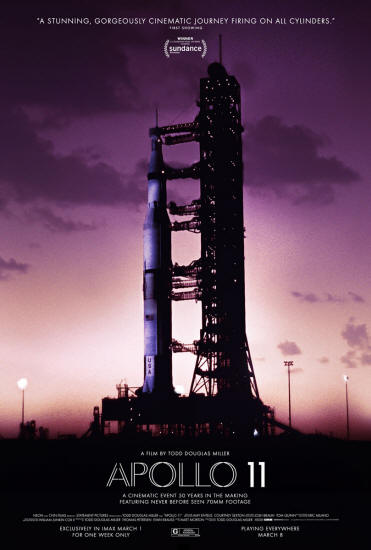 From director Todd Douglas Miller (Dinosaur 13) comes a cinematic event
fifty years in the making. Crafted from a newly discovered trove of 65mm
footage,
and more than 11,000 hours of uncatalogued audio recordings, Apollo 11 takes
us
straight to the heart of NASA’s most celebrated mission—the one that first
put men
on the moon, and forever made Neil Armstrong and Buzz Aldrin into household
names. Immersed in the perspectives of the astronauts, the team in Mission
Control, and the millions of spectators on the ground, we vividly experience
those momentous days and hours in 1969 when humankind took a giant leap into
the
future. From director Todd Douglas Miller (Dinosaur 13) comes a cinematic event
fifty years in the making. Crafted from a newly discovered trove of 65mm
footage,
and more than 11,000 hours of uncatalogued audio recordings, Apollo 11 takes
us
straight to the heart of NASA’s most celebrated mission—the one that first
put men
on the moon, and forever made Neil Armstrong and Buzz Aldrin into household
names. Immersed in the perspectives of the astronauts, the team in Mission
Control, and the millions of spectators on the ground, we vividly experience
those momentous days and hours in 1969 when humankind took a giant leap into
the
future.Miller and team were working closely with NASA and the National Archives (NARA) to locate all existing Apollo 11 footage when NARA staff members made a startling discovery that changed the course of the project: an unprocessed collection of 65mm large format footage, never before seen by the public, containing stunning shots of the launch, the inside of Mission Control, and recovery and post-mission activities. The footage was so pristine and the find so significant that the project evolved beyond filmmaking into one of film curation and historic preservation. The other unexpected find was a massive cache of audio recordings—more than 11,000 hours—made by two custom recorders which captured individual tracks from 60 key mission personnel throughout every moment of the mission. Apollo 11 film team members created code to restore the audio and make it searchable, then began the multi-year process of listening to and documenting the recordings, an effort that yielded remarkable new insights into key events of the mission as well as surprising moments of humor and camaraderie. The digitization of the 65mm collection—as well as the re-scanning of 16mm and 35mm materials—was undertaken at Final Frame, a post-production house in New York City, which helped create a custom scanner, capable of high dynamic range scanning at resolutions up to 8K. The resulting transfer—from which the film was cut—is the highest resolution, highest quality digital collection of Apollo 11 footage in existence. Constructed entirely from archival materials and eschewing talking heads, Apollo 11 captures the enormity of the event by giving audiences of all ages the direct experience of being there. When John F. Kennedy pledged in 1962 to put Americans on the moon by the end of the decade, he described it as a bold act of faith and vision. Apollo 11 bears witness to the culmination of that pledge, when America and the world came together in an extraordinary act of unity and resolve, to achieve one of the greatest and most complex feats in human history. |
More in 70mm reading: PDF: Apollo 11 Press Kit “APOLLO 11: FIRST STEPS EDITION” to open in science centers and museum Stephen Slater in Conversation An Interview With Jim Ward, V.P. of Marketing, Lucasfilm, Ltd. in70mm.com's Todd-AO Page Motion pictures photographed in Super Panavision 70 & Panavision System 65 Internet link: Apollo 11 movie Vanity Fair |
Director's Statement |
|
 "The
way we discovered the 65mm, and seeing it for the first time was something that
I will never forget. There was two reels, and we put them on a prototype scanner
that the guys at Final Frame had built, and you would just see these little
bursts of imagery about every three of four seconds" - Todd Douglas Miller,
Director "The
way we discovered the 65mm, and seeing it for the first time was something that
I will never forget. There was two reels, and we put them on a prototype scanner
that the guys at Final Frame had built, and you would just see these little
bursts of imagery about every three of four seconds" - Todd Douglas Miller,
DirectorThe mission of Apollo 11 is one of the greatest achievements in human history – hundreds of thousands of people spread across tens of thousands of companies all focused on putting the first humans on another world. At times it felt like our film had just as many moving parts. What started out as a simple editing exercise - could we tell the entire story of the mission using only archival materials – turned into a cooperative effort by an international team of experts to create the definitive work on Apollo 11 for the screen. The remarkable discovery of a cache of untouched large format film and audio recordings added another dimension to the project: it was more than just a film now, it was an opportunity to curate and preserve this priceless historical material. This film only exists because of the tremendous efforts and sacrifices of an extremely talented group of individuals. From the archivists and researchers, to the post production teams and production partners, everyone labored for years to ensure we got it right. We are also indebted to the scores of writers, filmmakers, and researchers that have come before us to build on the canon of project Apollo. And to the astronauts, their families, NASA employees, contractors, and volunteers, many of whom we came to know in the course of making this film, we humbly say thank you. You remind us that great things can be accomplished when people unite for a common goal. Todd Douglas Miller January 2019 |
|
A Conversation with Historical Consultant Robert Pearlman |
|
 What is groundbreaking about this film? What is groundbreaking about this film?ROBERT PEARLMAN: A lot of works have been made about Apollo 11, the first mission to land humans on the moon, but what sets this film apart is the fact that this is history being made again — new footage that was previously unknown has been expertly restored and scanned at the highest resolution possible, presenting never-before-seen footage from what many consider the crowning achievement of humankind to date. We're able for the first time in history to get new glimpses and new information about how we landed men on the moon. What makes the images in Apollo 11 so special? RP: The original source material was 70MM, which is the widest-format film you're going to find. The detail that's brought out is considerable — for example, there's a scene capturing the astronauts (Neil Armstrong, Buzz Aldrin and Michael Collins) suiting up for the mission. We knew that scene was filmed, but when it was shown to the public, it had been cropped to 35MM in order to match the other film that was available. Many scenes like this have been expanded to a widescreen view, and we see them in high-definition for the first time. For the viewing public, this means a more visceral, you-are-there feeling, including being in the room with the astronauts as they're getting ready that July morning. For historians, it's an opportunity to see the whole layout of what was happening that day, featuring details that weren't previously available. Why have we not been able to see this footage all these years? RP: The fact that these new reels were discovered by coincidence sitting in the National Archives so close to the 50th anniversary of the moon landing makes for a wonderful discovery, giving us the ability to celebrate it properly. |
|
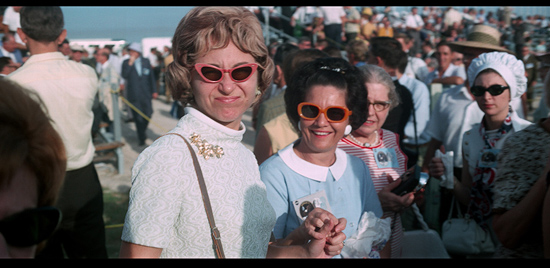 Originally NASA held the footage in a storage facility but
over the
years it was transferred to the National Archives, where it was more or less
forgotten. Some of the footage was prepared for a documentary released in
the
1970s, but once again the footage was cropped. This is the raw footage as it
was
originally taken, and since NASA didn't have the funds or interest to
produce more
material, it sat unused. Fifty years later, the possibility of finding
footage
we've never seen before is becoming more and more rare, if not impossible.
Because
it's such a famous, iconic event in history, one would think that all
footage that
was ever to be seen from it would have already been discovered. Originally NASA held the footage in a storage facility but
over the
years it was transferred to the National Archives, where it was more or less
forgotten. Some of the footage was prepared for a documentary released in
the
1970s, but once again the footage was cropped. This is the raw footage as it
was
originally taken, and since NASA didn't have the funds or interest to
produce more
material, it sat unused. Fifty years later, the possibility of finding
footage
we've never seen before is becoming more and more rare, if not impossible.
Because
it's such a famous, iconic event in history, one would think that all
footage that
was ever to be seen from it would have already been discovered.The audio is as powerful in the movie as the images. What has been improved in this regard? RP: The audio footage is something we knew existed — it had not been lost to the years like some of the images — but we've only had access to it recently. When the astronauts went to the moon, there were several different tracks of audio, including the space-to ground audio, or the voice of the astronauts being broadcast to the ground, and the singular voice of the representative from Mission Control being transmitted back up to the astronauts. There were other tracks that were known to exist which had not been released to the public, including the flight director's loop, featuring all the voices from Mission Control consoles talking to him. In addition, there was footage of the astronaut 's voices from space as well as the back-room audio loops coming from Mission Support. NASA made hours of this audio available, and what this film team has done is sort through that audio, re-mastering it and synching it up with available film footage. For the first time, you can watch flight controllers speaking from Mission Control and actually hear what they're saying because the audio has been meticulously synched with the corresponding moment in time. There's spectacular footage of average Americans watching the launch from parking lots and Florida beaches — who shot this footage? |
|
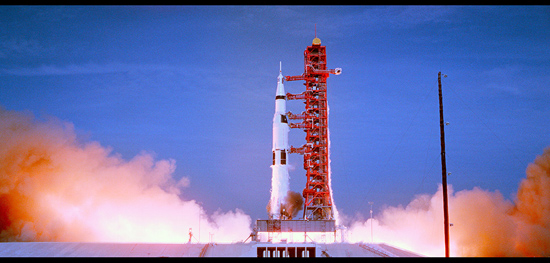 RP: A film team from NASA captured the estimated one million people who
showed up
for the launch, the most people ever to show up for an event like this. This
was
the same film team that was documenting the astronauts preparing for the
launch,
for a project named Moonwalk One . This crew filmed nearby beaches, parking
lots
and well as the VIP and press viewing area. While this footage had been
previously
released, it was cropped, sometimes dramatically, so we're seeing a much
wider
view than ever before — we have a fuller record of what was filmed, in the
widest
format and highest definition possible. We can see more details than ever
before.
For example, in a scene at the VIP viewing site, you can spot people like
Johnny
Carson and the science fiction writer Isaac Asimov among the spectators.
Watching
the crowds outside J.C.Penney and along the beaches, you can see how people
dressed at the time, what cars they drove. You can even see the reflection
of the
launch in the sunglasses of spectators as they watch it take off. RP: A film team from NASA captured the estimated one million people who
showed up
for the launch, the most people ever to show up for an event like this. This
was
the same film team that was documenting the astronauts preparing for the
launch,
for a project named Moonwalk One . This crew filmed nearby beaches, parking
lots
and well as the VIP and press viewing area. While this footage had been
previously
released, it was cropped, sometimes dramatically, so we're seeing a much
wider
view than ever before — we have a fuller record of what was filmed, in the
widest
format and highest definition possible. We can see more details than ever
before.
For example, in a scene at the VIP viewing site, you can spot people like
Johnny
Carson and the science fiction writer Isaac Asimov among the spectators.
Watching
the crowds outside J.C.Penney and along the beaches, you can see how people
dressed at the time, what cars they drove. You can even see the reflection
of the
launch in the sunglasses of spectators as they watch it take off.The colors are extraordinary in these scenes — it looks like vintage Kodachrome. RP: You experience a tremendous mix of feelings watching these scenes, which are almost hyper-real. In one sense you know you're watching footage that's 50 years old — it exudes that sense of age and time — but what's most striking is how state-of-the-art it looks, like it was shot with the highest-quality camera you can find today. We all know how the launch sequence is going to turn out — we know going in that they will make it to the moon and back — but you're on the edge of your seat all over again because it looks and feels like a live event unfurling in the present. It feels like something entirely new, even though this is some of the most famous historical footage ever recorded. The centerpiece of this movie is the moon landing, and the moonwalk — is there anything new we're seeing for the first time? |
|
 RP: We're seeing these scenes presented in a new way. The space footage is
not new,
but it was treated like the rest of the film — scanned at the highest
resolution
possible and placed into the context of a movie that draws you forward
through
existing archival footage, not through someone looking back and describing
how
it occurred. A lot of documentaries have depicted the moon landing and the
moonwalk using narration or talking heads — contemporary commentary, which
frames the footage so it feels like you're watching history. Because this
film is
cinema vérité, you're watching archival material telling the story itself in
an
approximation of real time — the sensation is like watching it unfold for
the
first time. RP: We're seeing these scenes presented in a new way. The space footage is
not new,
but it was treated like the rest of the film — scanned at the highest
resolution
possible and placed into the context of a movie that draws you forward
through
existing archival footage, not through someone looking back and describing
how
it occurred. A lot of documentaries have depicted the moon landing and the
moonwalk using narration or talking heads — contemporary commentary, which
frames the footage so it feels like you're watching history. Because this
film is
cinema vérité, you're watching archival material telling the story itself in
an
approximation of real time — the sensation is like watching it unfold for
the
first time.As a NASA historian, what in your opinion are the most exciting features of this movie? RP: Having worked with a lot of filmmakers over the years on various projects, I've had to take people to task before on claims of never-before-seen footage — maybe the general public hasn't seen the footage, but plenty of others have. For the first time, this is bona fide footage that we have not seen before, so the discovery alone was exciting. Add to that the latest in film technology, the ability to present this footage in high resolution, and large format, which looks amazing on the big screen and almost beyond belief on in a large-format presentation. Simply being able to bring the mission back to life and see it on a scale this huge is probably the most exciting factor for me. What are some of the scenes you are seeing for the first time? RP: Scanning the rows inside the launch control center, being inside the suit-up room with the astronauts, getting a wider and more audible perspective of Mission Control during the launch, and being on board the U.S.S. Hornet (the recovery ship) as the astronauts returned from the mission — you can even spot Nixon in the crowd here. We have photographic documentation from these aspects of the mission, and other 16MM film taken from different vantage points, but the fact that we're seeing this from a new perspective, with new details to catch in a much wider frame, with clearer resolution — these are the moments you long for in a movie like this. This mission was well documented but now you have the opportunity to pick out details that tell a whole new story. |
|
 Why was the Apollo 11 launch so important in a historical context? Why was the Apollo 11 launch so important in a historical context?RP: The race to the moon unfolded in what was a perfect storm of events in the late 1960s — if all those events did not occur, we probably would never have reached the moon. We didn't go because we were scientifically interested in the moon — we went because we were in a cold war with the Soviet Union and it was a testament of our technological prowess that we could send someone to the moon; it might have unfolded differently if this happened during peacetime. This was the crowning achievement of a race between two world powers fighting each other in a way that no one was actually hurt. From a cultural standpoint, the moon has been a symbol of many different things to people throughout humanity, it has always been that unreachable world and we're fueled by the notion that if we can send a man to the moon, we can do anything. In the time frame that it occurred, even with the backdrop of the Cold War, we also might not even have gotten there were not for the very unfortunate assassination of John F. Kennedy, who was not a huge fan of going to the moon. He saw it as a political need in order to beat the Russians. Almost from the point he announced the space race, he was working behind the scenes to try and find a way out of it, even asking the Soviets to partner with us. When he was assassinated it became the vision and goal of a fallen hero, and it was untouchable from a political standpoint because it would have been seen as stomping on the legacy of a slain president. This was the culmination of a goal set out by someone that Americans, and the world, looked up to. If anything is going to be remembered about the 20th Century, it's going to be the fact that we took our first steps on another celestial body — because this is the future of humanity, the promise of going further. Apollo 11 was only the first step. Fifty years on, where do we stand in terms of the space program? RP: We've changed focus. Our original visions of how to go into space were not to go directly to the moon, it had to do with what came later, which was to establish a space shuttle and space station, then establish ourselves in orbit and go out even further. But a confluence of events changed our priorities. We haven't been back to the moon since 1972, after the sixth moon landing, but we're on the verge of returning — not as singular nations but in privatized missions. We've come to the point where there are companies that are building the rockets that will take private citizens to the moon. Countries like China are sending rovers to the far side of the moon, were no one has ventured before — as recently as January 2019. Later this year, the first Israeli moon lander will be launched from Kennedy Space Center here in the U.S. So we're having a lunar renaissance in the way that we're having more and more countries and organizations sending missions to the moon. Meanwhile, NASA is looking in coming years to send astronauts back to the lunar orbit in cooperation with its European, Canadian, Russian and Japanese partners with the intention of pushing on to Mars. After 50 years, we're at a new crossroads where we're ready to travel beyond flags and footprints toward more permanent lunar settlement. Soon we'll have a lasting presence there, pushing out into the solar system with the goal of always having humans exploring space. |
|
Filmmaker Bios |
|
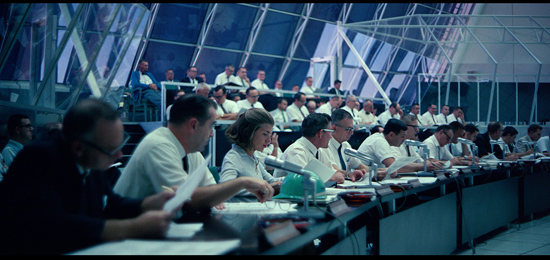 TODD DOUGLAS MILLER – DIRECTOR, PRODUCER, EDITOR TODD DOUGLAS MILLER – DIRECTOR, PRODUCER, EDITORTodd Miller is best known for his Emmy award winning film, Dinosaur 13, which premiered at Sundance in 2014. His other films include Gahanna Bill, Scaring the Fish, and The Last Steps. He is the founder and co-owner of Statement Pictures, based in Brooklyn, NY, which produces feature films and documentaries as well as large format/IMAX films for science centers and museums. He was born in Columbus, OH, and lives in Brooklyn, NY with his wife and three children. THOMAS PETERSEN - PRODUCER Thomas Petersen is a producer, DP, and co-owner of Statement Pictures. He was born and raised in New Orleans and studied journalism before moving to NYC in 2003. Previous documentaries include The Last Steps, The Acquired Savant (his directorial debut) , and the Emmy award winning Dinosaur 13. He lives in Brooklyn, NY. EVAM KRAUSS - PRODUCER Evan Krauss, a founding partner of NY-based law firm Gray Krauss Sandler Des Rochers LLP, concentrates his practice on music, film, television and new media. Evan works with songwriters, composers, recording artists, music and film producers, writers, directors, and both studio and independent content producers. As a natural extension of his law practice, Evan has also worked as a producer on various film projects, with a concentration in non-fiction. Evan’s various executive producer and producer credits include the documentaries “Hot Girls Wanted” (Netflix Original) , “The Lost Arcade,” Showtime acquired films “Porndemic” and “Godfathers of Hardcore” and the cult classic “Cropsey.” MATT MORTON - COMPOSER Matt Morton is a composer, multi-instrumentalist, and engineer/producer. He was a founding member of the band The Shantee, and has opened for bands including George Clinton and Parliament/Funkadelic, The National, and the Neville Brothers. His film credits include Scaring the Fish, Beauty of the Fight, The Last Steps, and the Emmy-award-winning Dinosaur 13. He was born in Columbus, OH where he lives with his wife Jen and a studio full of instruments, including the 1968 Moog Synthesizer IIIc that he used for the Apollo 11 score. ROBERT PEARLMAN – HISTORICAL CONSULTANT Robert Pearlman is a space historian, journalist and the founder and editor of collectSPACE.com, an online publication and community devoted to space history with a particular focus on how and where space exploration intersects with pop culture. Pearlman is also a contributing writer for Space.com and coauthor of "Space Stations: The Art, Science, and Reality of Working in Space” published by Smithsonian Books in 2018. He previously developed online content for the National Space Society and Apollo 11 moonwalker Buzz Aldrin, helped established the space tourism company Space Adventures and currently serves on the History Committee of the American Astronautical Society, the advisory committee for The Mars Generation and leadership board of For All Moonkind. In 2009, he was inducted into the U.S. Space Camp Hall of Fame in Huntsville, Alabama. |
|
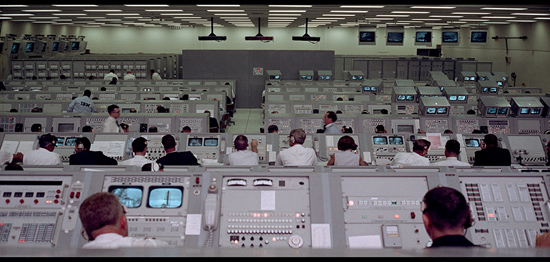 STEPHEN SLATER – ARCHIVAL PRODUCER STEPHEN SLATER – ARCHIVAL PRODUCERStephen Slater has had an interest in space travel and documentary filmmaking since an early age growing up in Derbyshire, England. Beginning his television career in sports production, the two fields combined in 2011 when he produced and directed the BBC FOUR documentary "Destination Titan", about the Huygens probe landing on Saturn's largest moon, Titan. Since then, his love of historic footage has seen him specializing as an Archive Producer for a series of high profile feature documentaries, including "The Last Man On The Moon", "George Best: All By Himself", and the BAFTA Award winning "Hillsborough". He is a specialist in the NASA film archive, and in 2011, he was nominated for the Arthur C Clarke Award for Achievement in Space Media. BEN FEIST – AUDIO RESTORATION / TECHNICAL CONSULTANT Ben Feist is a software engineer at NASA who splits his time between Johnson Space Center in Houston, and Goddard Space Flight Center in Greenbelt, MD. Ben has spent his career creating technology experiences since the birth of the Internet, and is the Apollo program historian behind the interactive website Apollo17.org, a web experience that recreates the last mission to the Moon in real time. Ben’s work at NASA focuses on future missions, solving the many data management and visualization challenges that will face us when humanity once again ventures on to other planets. AMY ENTELIS - EXECUTIVE PRODUCER Amy Entelis is executive vice president for talent and content development for CNN Worldwide. She is based in New York. Soon after her arrival in 2012, Entelis began shaping a renaissance at CNN, initiating the hires of more than 30 television journalists, scores of contributors and commentators, and launching four premium content brands for the network’s global platforms. Under her leadership, CNN launched CNN Films, which produces and acquires documentary films for festival, theatrical, and broadcast distribution; CNN Original Series and HLN Original Series, which develop non-fiction programming; and CNN Films Presents, which acquires encore runs of notable documentary features for broadcast on CNN. Entelis began her illustrious career in television journalism at ABC News, initially as a producer on the weekly news magazine 20/20, and later a producer for World News Tonight with Peter Jennings. Following ABC News, and before she joined CNN, Entelis served as executive vice president for talent strategy at Sucherman Consulting Group. A graduate of Vassar College, Entelis received a Master of Science degree in journalism from Columbia University and serves as a member of the Board of Visitors of the Columbia University Graduate School of Journalism. COURTNEY SEXTON – EXECUTIVE PRODUER Courtney Sexton, who joined CNN in 2013, works day-to-day with filmmakers to supervise the production of documentary films for theatrical exhibition and distribution across CNN’s platforms. Since Sexton joined CNN Films, the team has acquired, co-produced, or commissioned more than 40 original feature and short films including HALSTON and APOLLO 11. The multiyear collaboration with director Todd Douglas Miller for the production of APOLLO 11 follows Sexton’s and Miller’s successful collaborations for the News & Documentary Emmy®-winning Dinosaur 13, and THE LAST STEPS, a documentary short film about the final NASA lunar mission, Apollo 17, that was distributed by Great Big Story. In 2018, Sexton served as executive producer for RBG, directed by Betsy West and Julie Cohen, and THREE IDENTICAL STRANGERS, directed by Tim Wardle. |
|
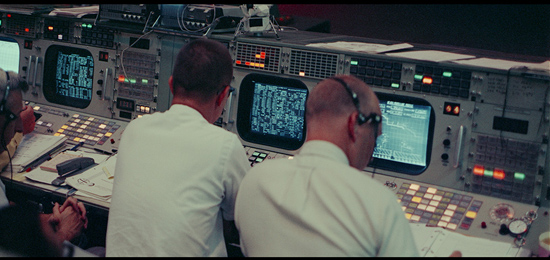 ALEX HANNIBAL – COORDINATING PRODUCER ALEX HANNIBAL – COORDINATING PRODUCERAlex Hannibal is associate director of content development for CNN Films. She is based in Los Angeles. Hannibal joined CNN in 2016 and is responsible for supporting the development and acquisitions of CNN Films titles, taking the lead on vetting incoming submissions, and identifying the next generation of documentary directors for CNN Films. As coordinating producer for APOLLO 11. Hannibal collaborated with director Todd Douglas Miller for more than two years on the development of the feature. In addition to APOLLO 11, Hannibal worked with Miller on the documentary short film THE LAST STEPS, about the final NASA lunar mission, which was distributed by Great Big Story. JOSH BRAUN – EXECUTIVE PRODUCER Josh Braun is the co-president of Submarine Entertainment, a hybrid sales, production and distribution company. Submarine's recent series titles include Wild Wild Country, Evil Genius and The Keepers. Recent sales titles include Three Identical Strangers, Shirkers, The Oslo Diaries, Crime and Punishment, White Tide, Pick of the Litter, Kusama: Infinity and Apollo 11. Submarine has been responsible for the sale of five out of the last eight academy award winning documentaries; Citizenfour, 20 Feet From Stardom, Man on Wire, The Cove and Searching for Sugar Man. TOM QUINN – EXECUTIVE PRODUCER Tom Quinn is the CEO and Founder of NEON; the auteur focused studio responsible for I, TONYA, THREE IDENTICAL STRANGERS, INGRID GOES WEST, COLOSSAL and upcoming features: AMAZING GRACE, THE BEACH BUM, THE BIGGEST LITTLE FARM, APOLLO 11, and WILD ROSE. As a distributor, Quinn is credited with having created new distribution paradigms for such groundbreaking films as SNOWPIERCER, IT FOLLOWS and BACHELORETTE, while simultaneously championing traditional distribution models for back-to-back Oscar winners 20 FEET FROM STARDOM and CITIZENFOUR. Having acquired, produced and distributed over 200 films spanning a 20 year career, Quinn is responsible for launching 2 distribution labels: the boutique label RADiUS and the groundbreaking genre label Magnet for Mark Cuban and Todd Wagner. He also played a key role in pioneering the use of VOD platforms as the Senior Vice President at Magnolia Pictures, and served as the VP of Acquisitions at Samuel Goldwyn where he was responsible for SUPER SIZE ME. Quinn is the first distributor to win the Visionary Award alongside Eli Roth and Elijah Wood from the Stanley Film Festival, and the Leading Light Award from the DOC-NYC Film Festival. |
|
Astronaut and Crew Bios |
|
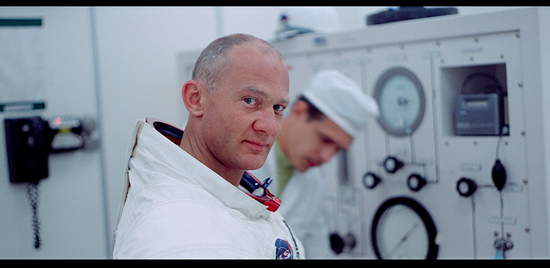 BUZZ ALDRIN BUZZ ALDRINBuzz Aldrin (formerly Edwin E. Aldrin, Jr.) , one of the first men to land on the moon, was born in Montclair, New Jersey, on Jan. 20, 1930. Aldrin attended the U.S. Military Academy at West Point and entered the United States Air Force. He flew 66 combat missions in in Korea and, after a tour of duty in Germany, went on to earn his Doctorate of Science in astronautics at the Massachusetts Institute of Technology (MIT), writing his thesis on orbital rendezvous. Aldrin became an astronaut with NASA's third group in October 1963. On Nov. 11, 1966, he orbited Earth with James Lovell aboard the Gemini 12 spacecraft and performed the first successful extravehicular activity (EVA, or spacewalk) during the mission that concluded the Gemini program. As Apollo 11 lunar module pilot, Aldrin joined Neil Armstrong in achieving humanity’s first landing on the moon and exploration of the lunar surface on July 20, 1969. In 1971, Aldrin resigned from NASA and a year later, retired from the U.S. Air Force with the rank of colonel. A self-described "Global Statesman for Space,” Aldrin has devoted his activities in the years since to advocating for human space exploration. He has authored 10 books (including four about his experiences on the moon) and established the ShareSpace Foundation and Aldrin Space Institute at the Florida Institute of Technology. Aldrin also devised the “Aldrin Mars Cycler,” a spacecraft system with perpetual cycling orbits between Earth and Mars. He has received three U.S. patents for his schematics of a modular space station, reusable rockets and multicrew modules for spaceflight. Aldrin currently serves on the Users Advisory Group for the National Space Council. |
|
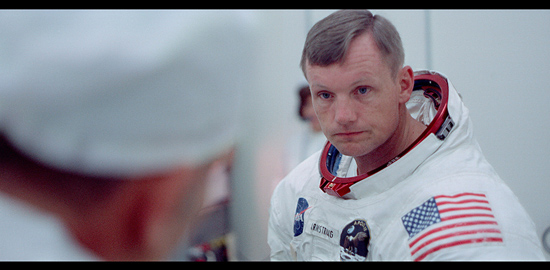 NEIL ARMSTRONG NEIL ARMSTRONGNeil Alden Armstrong, the first human to walk on the moon, was born in Wapakoneta, Ohio, on Aug. 5, 1930. After serving as a naval aviator from 1949 to 1952, Armstrong joined the National Advisory Committee for Aeronautics (NACA) in 1955. His first assignment was with the Lewis Research Center (now NASA Glenn) in Cleveland, Ohio. Over the next 17 years, he was an engineer, test pilot, astronaut and administrator for NACA and its successor agency, the National Aeronautics and Space Administration (NASA). As a research pilot at NASA's Flight Research Center at Edwards Air Force Base in California, Armstrong was a project pilot on many pioneering high speed aircraft, including the X-15 rocket plane. He flew over 200 different models of aircraft, including jets, rockets, helicopters and gliders. Armstrong was selected with NASA’s second group fo astronauts in 1962. His first assignment was as command pilot for Gemini 8. Launched on March 16, 1966, Armstrong and David Scott performed the first successful docking of two vehicles in space. As spacecraft commander for Apollo 11, the first crewed lunar landing mission, Armstrong gained the distinction of being the first person to land a craft on the moon and first to step on its surface. Armstrong subsequently held the position of Deputy Associate Administrator for Aeronautics at NASA Headquarters in Washington, D.C. In this position, he was responsible for the coordination and management of overall NASA research and technology work related to aeronautics. He left NASA in 1971 to become a professor of aerospace engineering at the University of Cincinnati. From 1982 to 1992, Armstrong was the chairman of Computing Technologies for Aviation, Inc. in Charlottesville, Va. He received a Bachelor of Science Degree in aeronautical engineering from Purdue University and a Master of Science in aerospace engineering from the University of Southern California. He was bestowed honorary doctorates from a number of universities. Armstrong died on Aug. 25, 2012, following complications resulting from cardiovascular procedures. He was 82. |
|
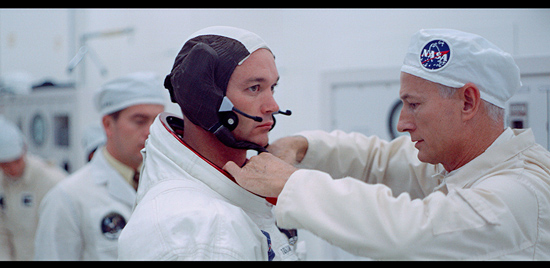 MICHAEL COLLINS MICHAEL COLLINSMichael Collins, who circled the moon during the first crewed lunar landing, was born on Oct. 31, 1930 in Rome, Italy. Collins attended the U.S. Military Academy at West Point, New York, where he received his Bachelor of Science degree. Prior to joining NASA, Collins served as a fighter pilot and an experimental test pilot at the U.S. Air Force Flight Center at Edwards Air Force Base in California. From 1959 to 1963, he logged more than 4,200 hours of flying time. Collins was named an astronaut with NASA’s third selection group in October 1963. He first served as a pilot on the Gemini 10 mission, which launched on July 18, 1966, setting a new world altitude record with crewmate John Young and becoming the United States' third spacewalker, completing two extravehicular activities (EVAs). As Apollo 11 command module pilot, Collins remained in lunar orbit aboard the spacecraft “Columbia," while Neil Armstrong and Buzz Aldrin became the first people to walk on the moon in July 1969. In January 1970, Collins left NASA to become the Assistant Secretary of State for Public Affairs. A year later, he joined the Smithsonian Institution as the first director of the National Air and Space Museum. While in that position, he was responsible for the construction of the new museum building, which opened to the public in July 1976. In April 1978, Collins became Under Secretary of the Smithsonian Institution. In 1980, he became the vice president of the LTV Aerospace and Defense Company, resigning in 1985 to start his own firm. Collins wrote about his experiences in the space program in several books, including “Carrying the Fire,” widely-considered the best written astronaut memoir. |
|
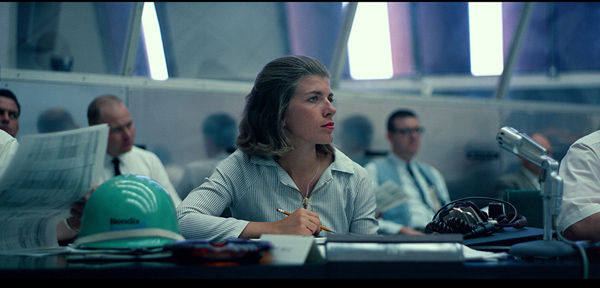 28-year-old
JoAnn Morgan in 70mm. Morgan, who worked as an instrumentation controller for the
mission, was the only woman allowed inside the firing room where NASA
employees were locked during Apollo 11's historic lift off on July 16, 1969.
From the CNN web site 28-year-old
JoAnn Morgan in 70mm. Morgan, who worked as an instrumentation controller for the
mission, was the only woman allowed inside the firing room where NASA
employees were locked during Apollo 11's historic lift off on July 16, 1969.
From the CNN web siteJoAnn H. Morgan (born Dec. 4, 1940) was the first female engineer at Kennedy Space Center and the only woman to be working at a console in the firing room for the launch of the Apollo 11 mission on July 16, 1969. She went on to be the first woman senior executive at Kennedy, later serving as the acting deputy director of the center. EUGENE F. “GENE” KRANZ Eugene F. “Gene” Kranz (born Aug. 17, 1933) served as a flight director in Mission Control during the Apollo 11 first landing on the moon. NASA’s second flight director, Kranz is best perhaps known for leading Mission Control in the safe return of the Apollo 13 crew after a mid-flight explosion crippled their spacecraft on the way to the moon. CHARLIE M. DUKE JR. Charles M. Duke, Jr. (born Oct. 3, 1935) served as the capsule communicator (“CapCom”) in Mission Control during the Apollo 11 first landing on the moon. A member of NASA’s fifth group of astronauts, Duke went on to become the tenth and youngest person (to date) to walk on the moon as lunar module pilot of Apollo 16 in April 1972. |
|
APOLLO 11 Credits |
|
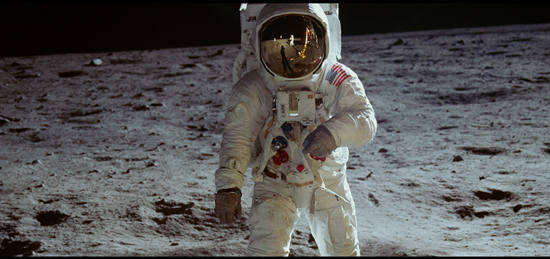 DIRECTOR
Todd Douglas Miller DIRECTOR
Todd Douglas MillerPRODUCERS Todd Douglas Miller, Thomas Petersen, Evan Krauss EXECUTIVE PRODUCERS Amy Entelis, Courtney Sexton, COORDINATING PRODUCER, Alex Hannibal EXECUTIVE PRODUCERS Josh Braun, Tom Quinn EDITOR Todd Douglas Miller MUSIC Matt Morton SOUND DESIGN/ RE-RECORDING MIX Eric Milano IMAX/LARGE FORMAT MIX Brian Eimer ARCHIVE PRODUCER Stephen Slater HISTORICAL CONSULTANT Robert Pearlman AUDIO RESORATION/ TECHNICAL CONSULTANT Ben Feist FILM RESTORATION AND POST SERVICES Final Frame Post, Will Cox, Sandy Patch |
|
| Go: back - top - back issues - news index Updated 22-01-25 |
